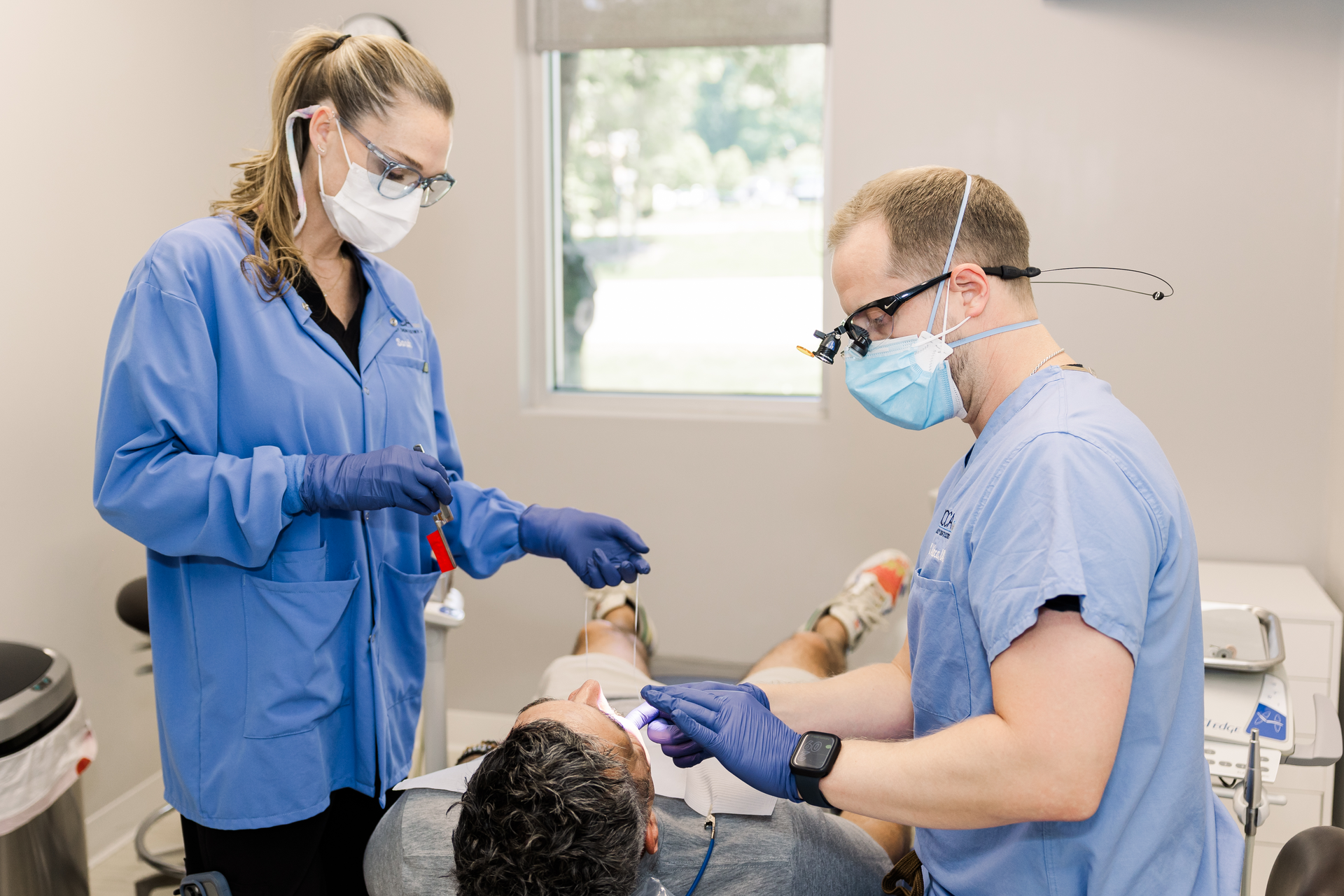I Have a Cavity? How Did That Happen?
By Dr. William Vacca
Ever wonder exactly why you should go to the dentist every 6 months? This article will focus on preventing tooth loss and the stages of tooth decay. Find out how cavities form and most importantly, what you can do to prevent them.
The “Players”
Tooth decay results from four key players: bacteria, plaque, acid, and sugar. When you eat or drink anything in excess with high sugar, the bacteria in our mouths break down that sugar, and the byproduct is acid. If this cycle gets out of control, the outer layer of your teeth will begin to erode, and a cavity will form. Understanding how a cavity progresses through its various stages can help with preserving your tooth.
Stage 1: Demineralization
White spots begin to form just below the surface once the tooth reacts to excessive acids. These white spots represent the demineralization of the tooth and can be easy to miss. If you do manage to spot them, you’ll notice a white/chalky appearance on your tooth.
Stage 2: Enamel Breech
Tooth enamel is one of the most durable and resilient substances in the body. The same bacteria that were present in Stage 1, making the tooth surface soft and chalky, will begin to break down the enamel of your tooth, resulting in a larger hole. Luckily, these small cavities are usually asymptomatic and can only be detected under high magnification by your dentist.
GOOD NEWS…you do not necessarily need fillings as a result of Stage 1 or Stage 2! You can reverse these processes with prescription strength fluoride toothpaste, regular use of fluoride mouth rinse, and thorough home care.
Stage 3: Dentin Exposure
If a cavity progresses beyond stage two, you’ll likely become aware because discomfort is often involved. Below the enamel of your tooth lies the Dentin. This layer of your tooth is way more sensitive and once the bacteria infiltrate, the decay can spread much more rapidly. Unfortunately, once the cavity is in the Dentin, a filling is the only way to fix it. If left untreated, the bacteria/decay can reach the most sensitive area of the tooth, the dental pulp (nerve).
Stage 4: Pulp Exposure
Once a cavity reaches the pulp, chances are, you are going to experience some pain. Tooth pain can range from a dull constant ache to acute throbbing. If the bacteria infiltrate the dental pulp, your options include performing a root canal to save the tooth or extracting the tooth entirely.
What Can You Do to Help Prevent Cavities?
Encourage these healthy habits:
(1) Brush twice a day with a fluoridated toothpaste
(2) Floss at least once a day and rinse
(3) Rinse daily with a fluoride mouth rinse
(4) Maintain a 6-month dental cleaning and check-up
(5) Have radiographs or x-rays taken every year, or as recommended
(6) Limit sugar intake, (stay away from high sugar snacks and drinks)
If you think your child may have a cavity or you'd simply like to schedule a thorough cleaning and exam, simply call our front desk team at (804) 739-9191.











